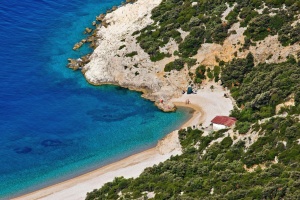New Native Advertising Approach Drives Results for Travel Brand

When Starwood Hotels Hawaii wanted to create some buzz around its resorts, the company wanted to do something different … something more than just your run-of-the-mill “enter to win” type of contest.
Native advertising came to the rescue, in the form of a captivating contest and sweepstakes with a “reality-show” angle. Starwood partnered with DreamPlanGo, a premier travel inspiration website, to create a unique campaign that is generating massive appeal among travelers, as well as meaningful connections throughout the online travel community. It makes sense, considering those are two things that native advertising does best. Any travel brand can learn from the example!
So, what is native advertising? Well, it’s turning out to be a pretty big deal – and if you’re a travel marketer, you’ll definitely want to pay attention. According to eMarketer, this style of advertising is expected to continue its growth explosion in 2015, with marketers expected to spend $4.3 billion on native advertising in this year, a 34% increase from 2014.
To sum up native advertising, here are six important points developed from industry trends and research:
• Native advertising is designed to blend into the form and function of the platform on which it appears and to be viewed as editorial. DreamPlanGo and Starwood developed this content and sweepstakes event as their native ad style. Other forms include: social media posts, branded content, videos, giveaways, email campaigns, reviews, and print and/or online advertorials.
• Native advertising, in other words, is content marketing – the practice of using content to build trust and engagement with would-be customers. The more informative content you have out there working to inspire your audience, the better the relationships you’ll build.
• It’s a brand awareness tool that leads to intent and action. Native ads in any form tell your brand’s story using a variety of channels, working to build lasting impressions. A recent Forrester statistic proved that a consumer engages with 11.4 pieces of content prior to making a purchase. Those articles, contest, email campaigns, social media posts are all working to remind those potential buyers of what’s great about your brand.
• Native advertising not only reaches your audience, but takes them through the journey from discovery to actually visiting you. This is where knowing your audience and where they are in their purchasing decisions are key. Provide readers with basic pieces of content so they can get to know you, introducing them to your brand. Also provide more advanced content, reaching those who already know you. That may include destination details, information on where to stay, what to do messages, and tips on how they can plan and go to your destination.
• Native advertising gets around “ad-blindness” and allows you tell your story to opt-in readers. A study by Inc.com showed that 70% of individuals want to learn about products through content rather than through traditional advertising. And Hubspot found that you’re more likely to complete NAVY SEAL training than click a banner ad, so… I guess no one’s really clicking on banner ads! Native advertising allows the consumer to opt-in or choose to read your content, educating them about your brand instead of pushing a deal or service.
• Native advertising delivers ROI. Native ads: increase time on site, ultimately building a more qualified lead and generating clicks on multiple website pages. They also generate interest, produce social engagement with your brand and bring highly interested and qualified leads and visitors to travel brands.
Native Advertising in Action
Let’s use the contest and sweepstakes I mentioned earlier that DreamPlanGo and Starwood Hawaii are currently conducting. The buzz, interest and engagement around both brands are soaring, and the audience is getting excited about the event we’ve put together.
Through our unique “reality-show” approach, we’ve created a contest and sweepstakes that are a little different and require voters to spend some time with the two brands involved, DreamPlanGo and Starwood. After readers discover their favorite couple (from a pool of six couples all vying to win a Hawaii honeymoon trip), they can cast their vote. The votes also put the readers in the running to win a trip to Hawaii and stay at Starwood’s Sheraton Waikiki.
Since the Jan. 12 launch date each brand has seen a boost in brand awareness through social engagement, shares and website traffic increase. Plus, readers get something good in return (a chance to also win a Hawaii stay) just for voting.
Other native ad styles just like this have proven to show tremendous ROI for travel brands. We’ve seen native ad campaigns earn more than 30,000 brand actions or engagements, meaning readers watched the brand’s videos, viewed its photo galleries, shared, liked or commented on its social media posts and more. It all worked to build a huge audience of qualified leads, or in other words, “future customers.”
If you haven’t given native advertising a try, or are not sure how to steer yourself away from traditional advertising methods like banner ads, you may want to consider a more creative tactic to reach your audience.
Great content – that’s native advertising!
www.dreamplango.com

